Author: Connie Baker-Arney.
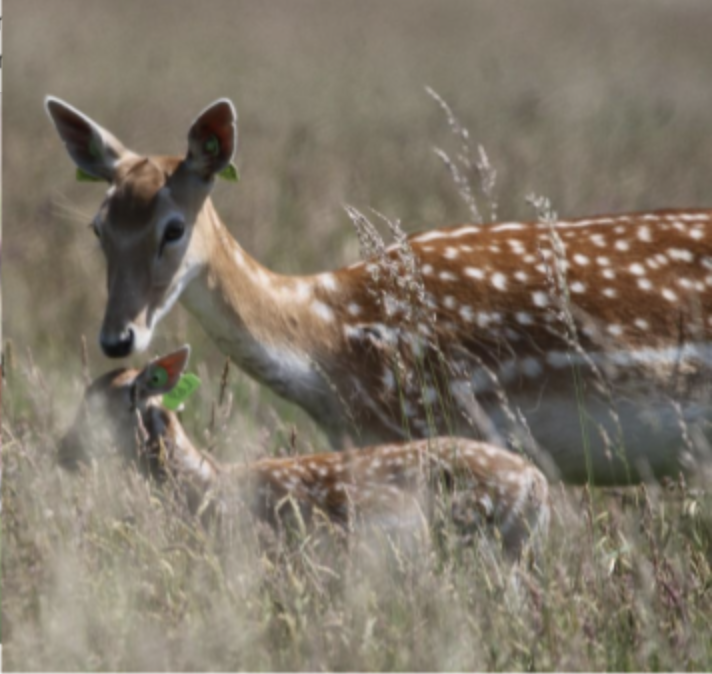
Let me set the scene… It’s October 2020, the covid situation is tumultuous, we are all still working from home. But, despite this I am starting a PhD, a PhD that requires a vast amount of fieldwork to form a longitudinal study about the maternal behaviour, stress, and investment of the fallow deer. I had never undertaken such a large project that required such forethought, planning and commitment, I had never worked on a long-term behaviour study with wild animals before. This was about to be one of the biggest learning experiences of my life and it was all going to be during the worst months of the pandemic. I’m not sure any first year PhD student feels ready for what they are about to face, instead, to survive, you must embrace the severe overwhelm and somehow you make it through the other side.
Stuck in a rut
From the very moment I started my research it was full steam ahead. My PhD encompasses the study of maternal stress and that means studying the deer from mating all the way through to their fawning season. Their mating season- the rut starts in October which meant I was out in the field in week 2 of my PhD. I was loaded with equipment; a scope, range finder, Dictaphones, radios and was fully kitted out ready to start observing. I study the Phoenix Park population of fallow deer, which hosts around 600 individuals. Phoenix Park is expansive, the deer have specific territories and I.D tags which can be difficult to read and interpret without some form of training. I reached out to the University College Dublin PhD students that had previously worked in the park and asked if I could join their rut observations so that I could learn the I.D system, the park, and the general movement of the deer herd. They were fantastic at showing me the ropes and helping me learn the colours and codes on the tags, without this, I would have stumbled at the very first hurdle. The rut is a time of intensive data collection for many researchers, where the focus is usually on male behaviour but for me- I was collecting data on the females. Noting which females had a successful mating, which was obviously marked by specific behaviours from both males and females. This list of successful matings was key to my next 8 months of research, it would guide me on who I would observe throughout gestation. Whilst collecting this data, I was also able to observe the utter marvel that was the rut. I had never been privy to such an incredible act of nature, the sheer power and strength behind the males, the sound of their roaring as it echoes through the park and your body. It is truly spectacular.
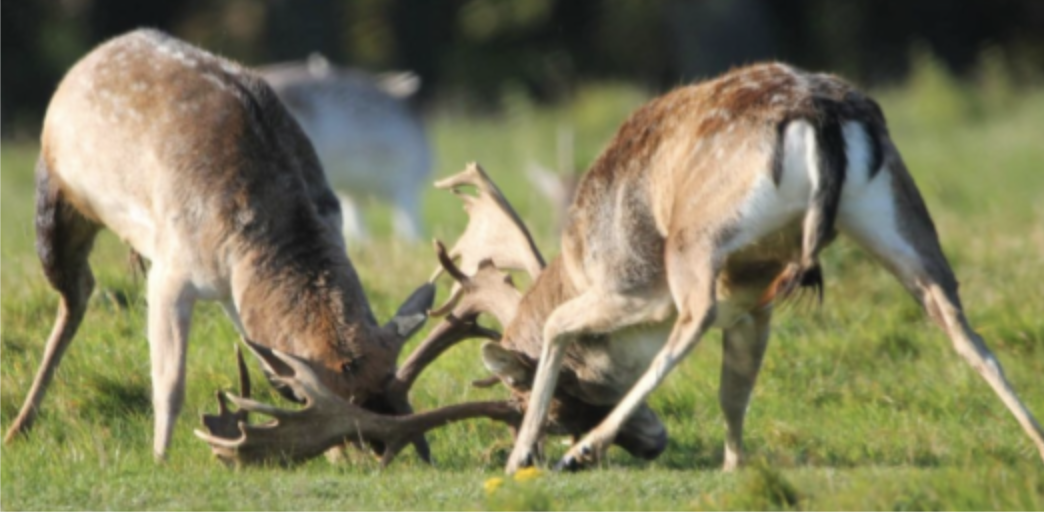
No i-deer
After a manic learning period in October, I had some time to catch my breathe and read and prepare preliminary tests. I had a lot of different ideas, but no idea if they would work. November was a month of feeling lost and learning what was and wasn’t within my capabilities. My preliminaries involved commuting out to the park and trialing locating the deer, reading I.D tags, recording data on the dictaphone, and experimenting with observations. I needed to know what was realistic- could I perform a focal observation for 20 minutes? What factors do I need to consider, and do I need to include in my data collection? In the beginning these preliminary days would leave me feeling quite stressed and like I wasn’t moving any further forward but looking back they were essential in shaping my research and preparing me for data collection.
I finally put together a methodology that included scan and focal sampling techniques, but then the rug was pulled from my feet. The university put a block on travel, and I was no longer permitted to work in the field. This filled me with dread and panic because the deer gestation period had begun, whilst it is 7.5 months long if I missed too many days of observation, I could lose an entire year of data. Fortunately, I was only stopped for 2 weeks. After completing lots of paperwork I was given the green light to go back to the field and begin studying 50 key females (assumed pregnant). I was excited and nervous. Within my first hour of data collection, I realized my methods needed changing, some of my ideas were no longer feasible. On the spot I had to start making decisions cutting difficult areas and adding in essential components about environmental disturbances like interactions with humans and dogs.
This was a steep learning curve that required me to think on my feet. I started to settle into a rhythm of collecting data and I started to get to know them, understanding their personalities and social groups. It was one of the most pleasurable parts of my work, out in the wide-open space able to observe these peaceful creatures. The next challenge presented itself in the way of the Christmas reindeer rush at Phoenix Park. As the days drew closer to Christmas the number of visitors increased rapidly, sometimes there were hundreds of visitors surrounding the deer, pushing them on to the roads, feeding them, chasing them, and flying drones into the herd. Not only was this incredibly stressful to witness, but it made it impossible to observe. When the deer are stressed the herd clusters and they look like a clump of neutral colours moving in unison. You cannot track an individual this way. At the peak of Christmas, I couldn’t complete observations and so I took some time away, ready to continue data collection in January where a whole new array of challenges awaited me.
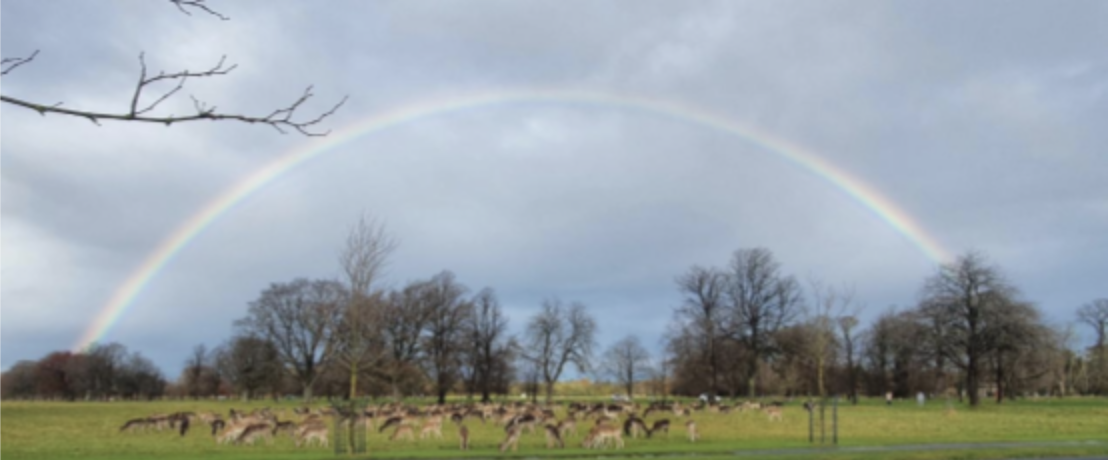
A Frozen Researcher
By this point I felt far more prepared and ‘in the know’, the December temperatures were manageable and so I thought foolishly that data collection would be a breeze from now on. It certainly was a breeze, but not the kind I was hoping for. Some of the study days were as low as -2, it snowed, rained, hailed and gailed and it tested my own resilience and persistence to the limit. It was obvious that I could only stand in one spot observing for short periods of time and this put a lot of pressure on data collection. At this time of the year, I found that the female herd would also split off into smaller groups and therefore I had to move between each group looking for my key females. The winter data collection was forcedly shorter due to the lack of daylight and terrible weather, but I still managed to collect the data I needed and could finally breathe a sigh of relief as I felt the spring days starting to ease their way in. Plus, I will admit it was a delight seeing the deer in the snow and it was remarkable to witness the hardiness of the deer as they sat through every storm and temperature fluctuation.
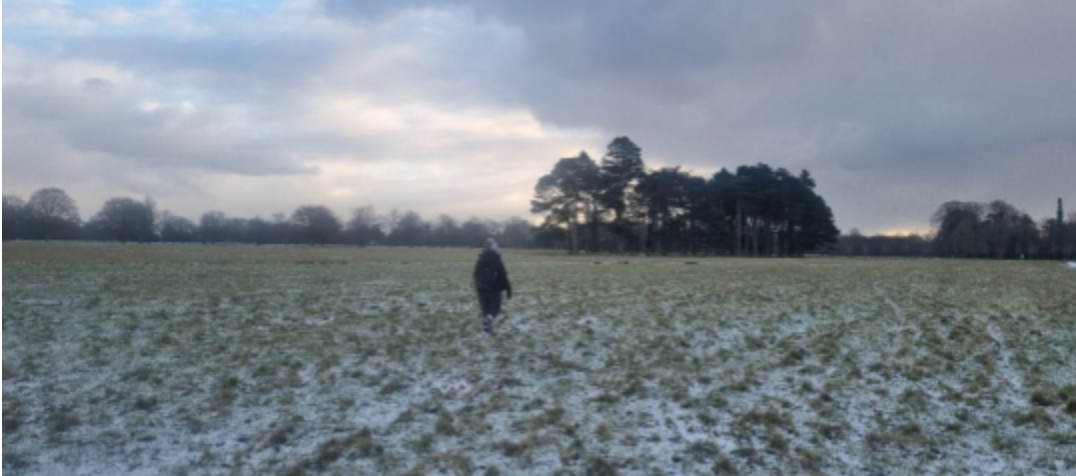
A Hairy Spring
Spring has always been my favourite season and Phoenix Park did not disappoint. The first few spring mornings I experienced were a stunning and it facilitated a behaviour change in the deer. The females moved out onto the open flat acres and accumulated in a much larger ‘super’ herd and thankfully they were far easier to observe not only because it was warmer but because in larger groups it is easier to scan through the ID tags. The weather fluctuated, some days in spring were miserable but none were as bad as those freezing cold winter days. Alongside this, the deer began to shed their winter coats which was a critical point for me as I had planned to collect shedding hair to test for cortisol levels in the deer. Hair has never been collected from live, pregnant, wild deer before and so this took a great deal of trial and error. I started off this collection using a sticky dart method and after many weeks of stress and failings by some miracle it started to work; but not in the way I needed it too. This led to more trial and error and observing and eventually a new methodology was developed that was incredibly successful. Spring was a fantastic time for data collection, an opportunity to watch breeding buzzards, skylarks and enjoy the warm sunshine and cool breeze. But for me, the most exciting part of Spring was knowing what came next… fawning.
Fawning in Love
Over the 7 months that I observed the females through their gestation I monitored them for signs of pregnancy, I looked for swelling in their stomachs, teets, and monitored changes in behaviour that could indicate maternal drive. Because whilst I had a list of key females with a mating, that did not guarantee a pregnancy and it is an important element of my research to understand if stress could be involved in their potential loss of fawn from miscarriage or abandonment. The week before the fawns were due, I spent a few days photographing the females and took detailed notes of those displaying signs of pregnancy. I loved this element of my fieldwork because I had been on a journey with these does. I had witnessed them go through terrible weather, numerous dog chases and human disturbances and they were here in front of me with swollen pregnant bellies ready to give birth.
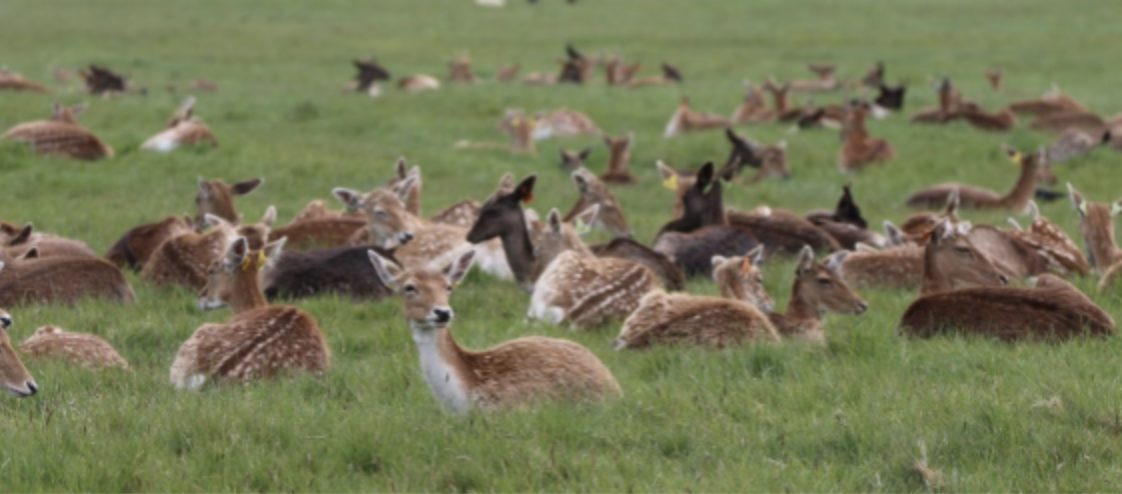
I was so eager to meet their fawns and to see them become mothers, and as a behaviour scientist this was a dream come true to be witnessing this unfold in front of me. The month that followed saw a complete structural and behavioural change in the doe herd as females went away to fawn, I witnessed a young doe give birth on the herd, the first fawn join the herd with its mother and observed the mad dashing of mother and fawn groups moving from one secret location to another. On one occasion I joined the UCD tagging team and I assisted in the capture and tagging of fawns. It was incredibly busy but full of so much joy and fun and I needed it because my final month of data collection- July was my hardest yet. What an honour it was to come so close to a newborn wild animal.
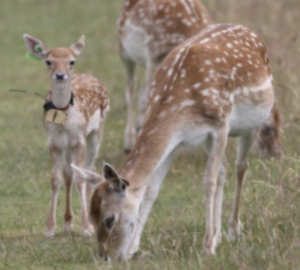
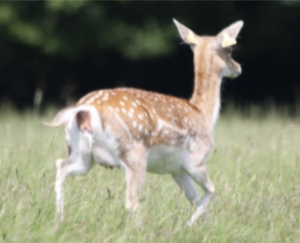
Invested in you
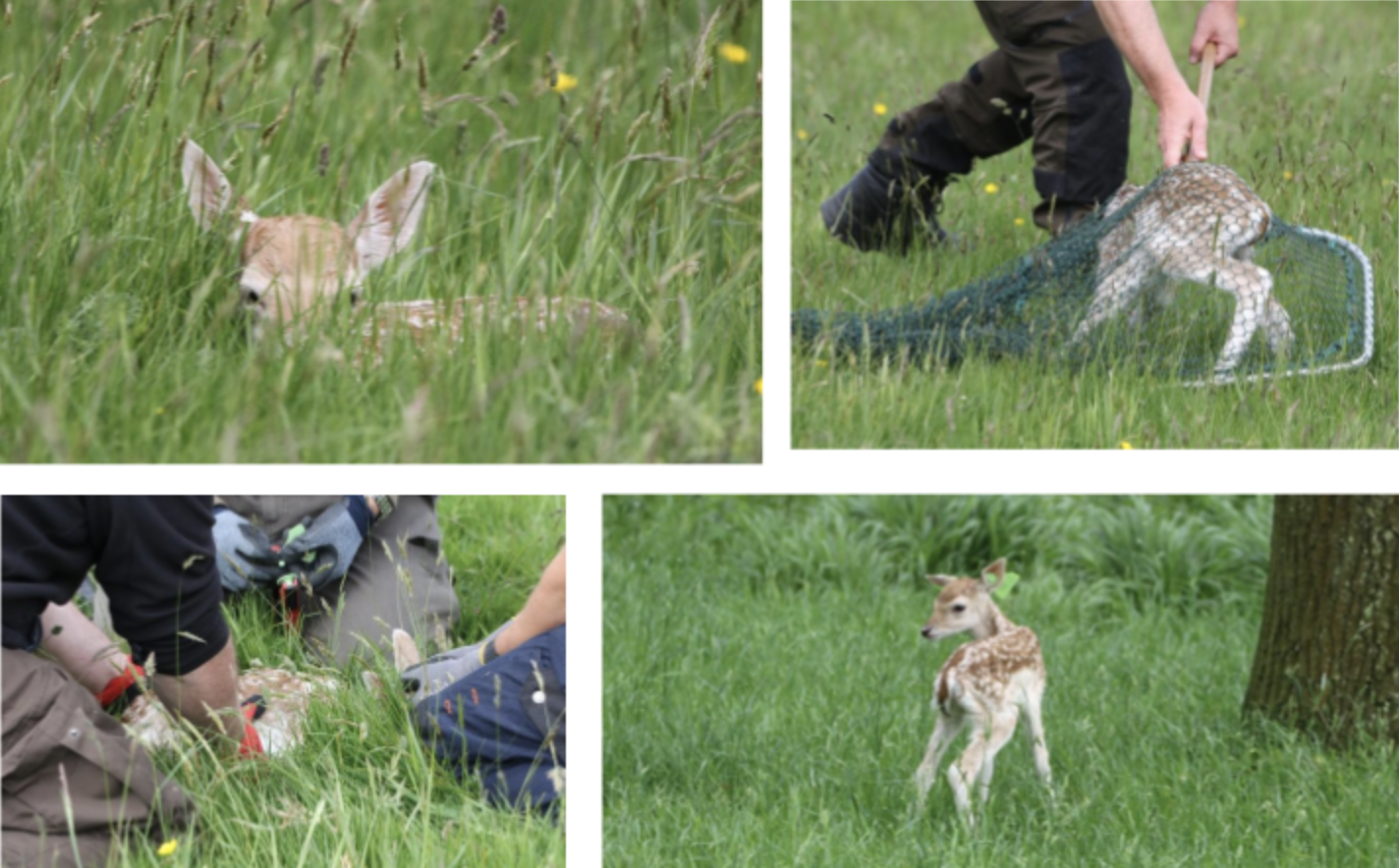
I started with excited anticipation thinking it would be a bit of a jolly and it certainly was not that. It was wonderful work, but it was intense. The Park in full summer is beautiful, the grass and nettles are 5ft high (as tall as me), the swallows, swifts and starlings swoop around you and you capture the most beautiful sunsets. I started my days at 7am and would stay in the park until the last light so that I could capture the pairs at times when the park was less busy or so that I could see the more secretive mothers come out and present their fawns. It was the most intensive data collection I completed, and it included an extreme heatwave and a rainstorm! I have not tired of hearing the call of a mother to her fawn, of seeing their beautiful investment behaviours including the grooming and nibbling of fawn ears and how lovely it is to see a fawn come and suckle on its mother. What’s more, it has been a pleasure to see the does through from mating to the investment of their fawn. After a jam-packed July with lots of mother-fawn observations my field season came to an end.
Having a break gives you time to reflect (and to miss the deer). It has allowed me to process the things I have learnt, the challenges I have overcome and what to expect for my next field season. Whilst there were some low points, there were many high points that outweighed these. The fluffy deer in the snow, creating new methodologies, witnessing novel behaviour, the spring sunshine, collecting hair and seeing the mothers care for their fawns. Now it’s time for some data processing before my fieldwork kicks off again in October… I already can’t wait to see who will be pregnant next year. If you like the sound of my research and my story, feel free to follow me on Instagram.





















































